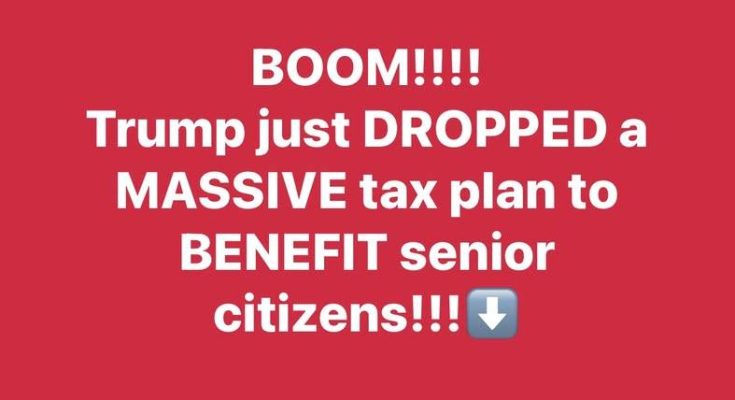In a significant economic initiative, White House Press Secretary Karoline Leavitt has formally introduced President Donald Trump’s new tax proposal, an ambitious strategy intended to offer substantial relief to middle-class Americans while addressing tax loopholes that favor the affluent. This proposal, which is already igniting intense discussions throughout Washington, emphasizes the removal of taxes on tips, Social Security benefits, and overtime pay, measures aimed at increasing the disposable income of ordinary workers.
This announcement arises in the context of increasing worries regarding inflation, economic uncertainty, and the ongoing repercussions of the pandemic, which have imposed significant financial strain on American households.
Trump’s team asserts that these tax modifications will provide direct advantages to workers in service sectors, seniors on fixed incomes, and employees working additional hours to make ends meet. Nevertheless, detractors contend that while some elements may appear beneficial to the middle class, the overall consequences of the tax reductions could predominantly favor corporations and affluent individuals.
A Detailed Examination of the Main Provisions Trump’s proposal encompasses several crucial tax policy changes designed to stimulate economic growth, enhance employment, and secure long-term fiscal health.
Among the most prominent provisions are: 1. Abolishing Taxes on Tips, Social Security Benefits, and Overtime Compensation The proposal eliminates federal taxes on tips, which would greatly benefit restaurant staff, bartenders, hairdressers, and other service industry workers who depend on gratuities for their earnings.
Trump’s campaign has framed this as a transformative measure for blue-collar employees. Social Security benefits would also be entirely exempt from taxation, a decision that could provide substantial financial relief to millions of retirees who currently endure federal taxes on a portion of their Social Security income.
By abolishing taxes on overtime compensation, the administration aims to motivate diligent Americans to take on additional hours without the concern of losing a significant portion of their earnings to taxation.
Addressing the Carried Interest Loophole: A significant aspect of the proposal involves tackling the carried interest loophole, a longstanding tax regulation that permits hedge fund managers and private equity executives to incur lower tax rates on investment profits compared to regular income earners.
During his 2016 campaign, Trump pledged to abolish this loophole, yet it remained largely unchanged throughout his administration. Currently, his team is advocating for a more assertive strategy to create a fairer tax environment. Additionally, the proposal aims to prolong the 2017 Tax Cuts and Jobs Act (TCJA), a cornerstone of Trump’s economic agenda during his initial term, which reduced individual tax rates, lowered the corporate tax rate from 35% to 21%, and raised the standard deduction.
The new initiative intends to extend these tax reductions beyond their scheduled expiration in 2025, contending that eliminating these cuts would impose undue pressure on American families and businesses. Proponents assert that the TCJA spurred economic growth, and allowing these tax cuts to lapse would lead to significant tax increases for millions of Americans.
Furthermore, Trump’s recent proposal advocates for a reduction in the corporate tax rate from 21% to 15%. His administration believes this adjustment will promote business investment, foster job creation, and deter companies from moving operations abroad.
Nevertheless, critics contend that further tax reductions for corporations may disproportionately favor large businesses and exacerbate wealth inequality. Supporters maintain that a lower corporate tax rate will result in higher wages, improved employee benefits, and robust economic growth.
The Political Contest: Democrats versus Republicans As anticipated, Democrats have pledged to oppose the proposal, denouncing it as yet another benefit for the affluent and a perilous fiscal strategy that could exacerbate the deficit.
House Minority Leader Hakeem Jeffries condemned the initiative, asserting: “This is merely another effort to direct funds into the hands of billionaires while neglecting working families. Abolishing taxes on tips may sound appealing, but this entire initiative serves as a disguise for corporate avarice.” On the Republican front, although many conservatives endorse Trump’s plan, divisions persist within the party. Some fiscal conservatives express concern regarding the absence of spending reductions to balance the tax cuts, while others advocate for the vigorous extension of the TCJA and a decrease in corporate taxes.
Senator Rand Paul, a longstanding proponent of tax reductions, conveyed measured support, stating: “I appreciate the direction of this proposal, but we must be prudent in how we finance it. We cannot continue to reduce taxes without also cutting spending.” Meanwhile, Trump supporters such as Senator Josh Hawley are in full agreement with the proposal, contending:
What Lies Ahead? The legislative struggle surrounding this tax proposal is poised to become a significant economic conflict during Trump’s presidency. The proposal must navigate through both houses of Congress, where it will encounter rigorous examination, negotiations, and possible modifications.
Given the divided government, obtaining bipartisan backing will prove difficult, particularly with the contentious 2026 midterm elections approaching. Legislators from both parties are expected to leverage this tax proposal to energize their constituents, turning it into a critical political issue.



